Here is a 32 MHz crystal from one of TI's reference design

The BOM list defines the crystal as
" CRYSTAL, OSCILATOR, 32MHz, 10pF, 10PPM/+10PPM, ‐40DEGC/+85DEGC, SMD"
It is for a MCU (ARM M3) and the datasheet has this sub-chapter:

Here is the link to 32 MHz Crystal Oscillator chapter:

When I use the above CL formula:
CL = 1 / (1/12pF + 1/12pF) + Cp = 6 pF + Cp
Another reference design of TI that uses a chip from the same family has the below crystal

all the other definations are the same as above formulas and notes. The BOM defines the crystal as:
Crystal, 32.000MHz, NX3225DA, 10/15ppm, 16 pF ! Temp range -30 - +85 deg C !
CL = 1 / (1/27pF + 1/27pF ) + Cp = 13.5pF + Cp
I could not really understand how C341 and C351 values are chosen, could anyone please explain it?
And How do you assume Cp's value?